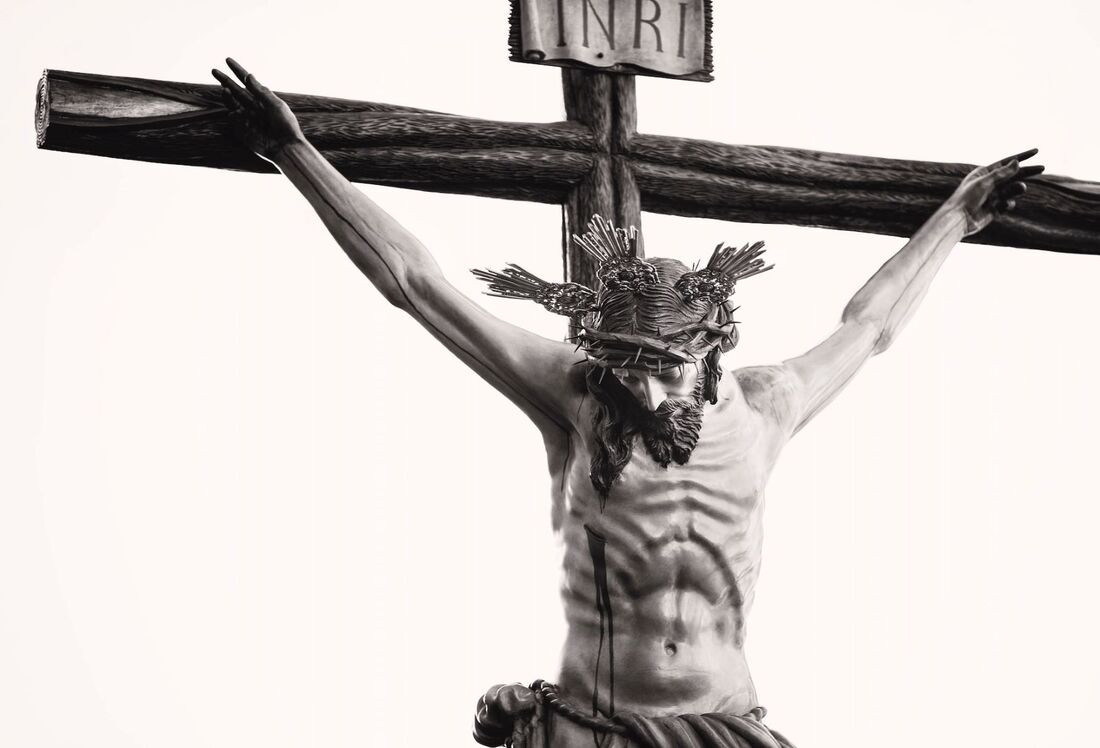|
Photo by Alem Sánchez Wendy V. Lisare’s The Other Side of Fear is the story of possibility when you receive freedom through a relationship with Jesus and the redemption that awaits everyone who repents. Fear clouds human life; sometimes, it seems that it is what drives society. The fear of this, the fear of that--everywhere, people are made to be afraid. Going through abuse and self-hatred while living in a world inundated and permeated by fear, W. Veronica Lisare found freedom through Christ. She recounts her life as a downcast youth and her divorce from a loveless marriage, losing a granddaughter and overcoming cancer to becoming a nurse and then as a minister spreading the word of Jesus Christ. By sharing her tribulations and ultimately coming to the embrace of the Lord, Lisare wishes to teach readers the spiritual tools she learned through her journey. She encourages everyone "to trust God and know that their past does not have to dictate the outcome of their future." Through Christ, everyone can walk through the other side, find God's loving perfection, and live freely under His will. "[H]e who began a good work in you will carry it on to completion until the day of Christ Jesus." The Freedom of Christ Modern society regards freedom as a virtue. In the legal sense, freedom is tied to rights; of course, it would not feel good to be stripped of one's rights. But this gives a misattributed sense of where freedom ultimately comes from--God. A growing number of people in America are beginning to think that freedom is a secular concept and that it either pops out of the ether wholesale or it is something the government provides its citizens. Freedom, colloquially, is synonymous with personal independence--to act, speak, and think, however, whenever, and wherever they want. Yet, that is far from the freedom given by Christ when He revealed Himself as the Messiah. "If the Son sets you free, you will be free indeed" When Jesus asserted that "everyone who sins is a slave to sin" in John 8:34, there was an uproar among the Pharisees because they could not accept that it was the nature of man to sin and to be controlled by it. And how can people escape from the inevitability of sin? Through accepting Christ in your hearts and acknowledging His divinity. For Christians, freedom is not the unfettered permission to do as you please but the liberation from sin. Freedom is to be in a relationship with God and live in obedience to His will. Freedom is the alignment of personal goals to God's will. It is not the material dependence espoused by the secularists but the guarantee of divine salvation through Christ and the promise of eternal life. It is only through submission to Christ that true freedom is realized, and sin is cast off the spirit. Why Secular Freedom Is Not True The "freedom" espoused by secularists is merely the permission to act without consequence, not true freedom. Look at countries where human "freedom" is at its highest. You will find rampant drug use, sexual immorality, and the weakening of the family as a traditional unit, among many others. Anchoring freedom with material gain and prosperity leads to opportunities for vice, and vice is the quickest way to sin. "[B]ut each person is tempted when they are dragged away by their own evil desire and enticed." For true freedom to be available and accessible to everyone, the popular definition should be changed and returned to its rightful state, which is the freedom to live in faith, trust in God's glory and attain divine salvation. Gaining the Freedom of Christ Accepting grace is the key to finding true freedom. By confessing your weakness, acknowledging that you are fundamentally flawed and broken, and conceding that only the love of God allows you to live as you should, you are transformed, body and soul. Receive freedom through a relationship with Jesus and be transformed, be granted a better, more fulfilling life with God. "It is for freedom that Christ has set us free. Stand firm, then, and do not let yourselves be burdened again"
0 Comments
Photo by Karolina Grabowska The discovery of perfect love and finding courage through faith is the culmination of being in a relationship with God—and that is not a journey that believers will find easy and straightforward. W. Veronica Lisare's The Other Side Of Fear shares harrowing details of a sorrowful youth, an end to a loveless marriage, and a loss of a family member. But it does not end there, for there is also a rebirth: prevailing against cancer, finishing a rewarding career as a nurse, and attaining a new life as a minister for the gospel of Jesus Christ. This inspirational book by Lisare provides a toolkit for the Christian faithful to conquer their fears and reach God. The Other Side Of Fear is a riveting tale of enduring abuse, fear, self-denigration, and ultimately realizing God's love. Through this discovery, she is not only embraced by the assuring warmth of faith but of courage, joy, hope, freedom, and fulfillment. By accepting God, Lisare acknowledges her true self as a daughter of the King of Kings and a devout disciple of Christ. The Other Side Of Fear is about the discovery of perfect love and finding courage through faith. Faith is Struggling Struggling has always been part of faith, and there will never be a moment of reprieve from that conflict because that is not the point of faith. Psalm 103:15 says that mortal life is akin to grass and that, like flowers, they flourish in the field. Life is short and delicate, but it is only in moments of faith that, for a moment, this frailty is transcended, and the value of living is known. Like grass perseveres despite the rain and the wind, the faithful will face tribulation, but there will be prosperous times, the flowering of God's will, and the fulfillment of His promise is at the end for those who persist in believing Him. Christianity does not promise that faith is easy, nor should it be. Faith is progress, not an end-point; it is not the door but the path towards it. Yet, believers are not alone in their endeavors or walking blindly. Not only will the grace of the Holy Spirit and the sacred Scriptures guide them, but they should not forget that the flock of God is many and full of like-minded folk: there are other people out there who will lend a hand. Hebrews 10:25 instructs believers not to neglect meeting together, like others might, so they can encourage each other and do more as a group of followers than solitary Christians. To continue forward, despite the world's evils and temptations, is to be truly faithful. It is the acknowledgment of God's divine plan and trust that there is the promise of eternal life beyond whatever hardship. Follow Galatians 6:9. Believers should not tire themselves from acting and believing in the good because there is a harvest on the horizon waiting for all those who will not surrender. God’s Love is Within All The divine plan of God is ineffable. People cannot explain it, nor can it be expressed, but if there is one thing to be known: it is that eternal salvation hinges on love. 1 John 4:16 says God Himself is love, and whoever lives in love will live in God—God also lives with them. God's love is greater not only because it is infinite and eternal but because God Himself is Love. To show the world His love, He gave Jesus, His one and only Son, as the sacrificial lamb so that whoever places their trust in Him shall not perish but be rewarded with eternal life (John 3:15).
Yet that is not to say that the God of love is conditional because it is not. God's love is unconditional, and He will continue to love everyone despite their sins and merits, for His love is from absolute goodness and infinite mercy. Nothing in this universe can separate people from God's love but the person themselves. Although His love is unconditional and eternal, it is the prerogative of people to reach out and accept It. As can be learned from Romans 10:9 that if you declare aloud that “Jesus is Lord” and believe fully in Him and sincerely in His resurrection, there is salvation beyond death. God is not forceful, for He granted humanity free will, and it will always be from their end that the relationship begins. Do you find yourself easily breaking down even from the slightest mishap? Sometimes, this can be rooted in one’s childhood experiences and the pain these brought.
They say childhood is easily the happiest time in anyone’s life. Children experience life in a vastly different way than how adults do. They look at the world through the lens of innocence which has yet to see life’s bitterness and troubles. They go about their days worry-free and without the burden of responsibility, allowing them to live life easily. They’re taken care of and given the freedom to explore and interact with the world in whatever way they want. This is how children are supposed to be reared. However, not every child has the luxury and privilege to experience this. In reality, some children live a somewhat problematic and traumatic life earlier. What is Childhood Trauma? Any emotionally painful event that can cause long-term physical and mental distress is considered childhood trauma. This encompasses physical, sexual, and emotional abuse, neglect, and witnessing violence or parental divorce. While it can be difficult to believe that children experience such cruel events, it is prevalent and can be easily dismissed by either parents or authorities. According to the NCTSN or the National Child Traumatic Stress Network, around 78% of adults reported remembering traumatic experiences before the age of five. And this only reflects the percentage of those who explicitly remember. There can be instances when people repress negative experiences as a coping mechanism. Thus, this 78% is only a rough estimate and can increase in number. Childhood trauma isn’t only a thing from one’s past. It will continue to haunt their memories and influence their behavior. Therefore, as adults, it’s crucial that people learn to be introspective, acknowledge their feelings, and deal with their past demons. Trauma Manifesting in Adults Traumatic events are often easily overlooked, not because people see them as trivial occurrences, but because they can easily pass as harmless behavior. When unresolved, this trauma can be carried until adulthood and manifest in different behavioral patterns. There’s no surefire indication of childhood trauma, but its most common impact revolves around the person’s self-image. Adults may cultivate the belief that they aren’t enough. With their experience in childhood neglect and abandonment, they may focus on their weaknesses and distort their perceptions of self, associating it with failure. This heightened criticism can likewise impact how people interact with each other, allowing them to disregard boundaries and accept toxicity. Physical Manifestations. Besides its mental and psychological scars, childhood trauma may have physical manifestations such as chronic illnesses and physical disturbances. Trauma can also be associated with unusual stress levels, influencing one’s hormonal behavior. This weakens the body, preventing it from performing at its full capacity. Hence, not only does childhood trauma affect one’s capabilities, but it may also impact others’ perceptions of the person. Emotional Manifestations. Over time, trauma can alter one’s understanding of their own emotions. This causes people to react differently or overreact in certain situations unnecessarily. These distressing events can also increase one’s aggressiveness, anxiety, and emotional outbursts and can be a primary reason for depression and panic attacks. Childhood trauma may have happened in the past, but its impact can drag on in the future. This can range from individual manifestations such as the ones mentioned above to a more social impact. While these demonstrations aren’t exactly destructive, they still hinder one’s development. Working with Childhood Trauma These manifestations aren’t a perpetual consequence. Adults can address the trauma driving these behaviors and move forward to change. Acknowledge that it Happened A simple instance of opening up to others whom one wholeheartedly trusts can be the first step to processing trauma. Admitting something one has experienced can be very difficult as an adult since this can likewise mean acknowledging or associating that event with one’s weakness. However, it’s essential to understand that trauma is never the victim’s fault. Work with a Professional When working through trauma and other distressing psychological circumstances, the best resolution should be with a professional. People can find these painful memories too much to handle. Thus, professionals can guide how to best work through them. Additionally, these professionals can provide materials and other methods to control pain and become stronger individuals. Find a Support Group One can easily find a professional that can help them. But whether they accept the help and follow the advice depends on the individual. Interacting with individuals who share the same trauma can be enough motivation to fuel one’s drive to betterment. Lean on others’ experiences and learn how they worked through their problems. A perfect material to learn from is Veronica’s overcoming journey from childhood abuse, The Other Side of Fear. In this book, she shares how she worked through the issues she experienced as a child and how these impacted her life. |



 RSS Feed
RSS Feed
